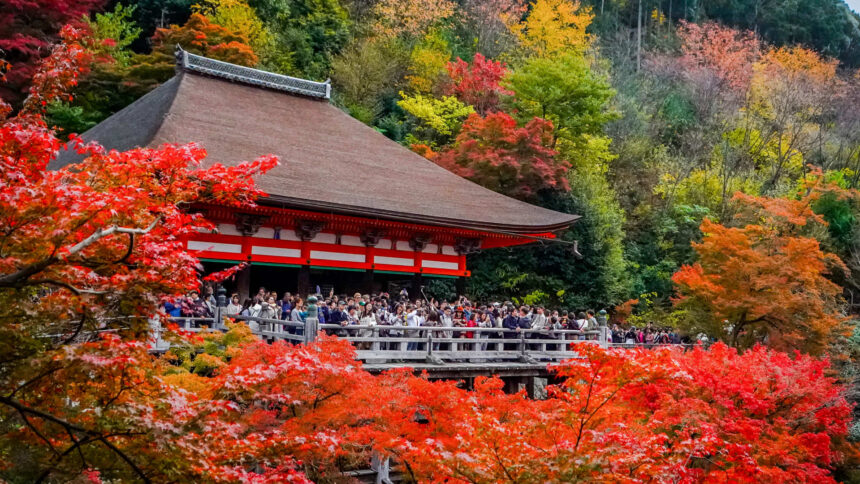Temperatures in Japan are cooling, but interest in visiting shows no signs of abating, as autumn arrivals continue to exceed pre-pandemic levels.
The country welcomed 2.93 million foreign visitors in August, followed by another 2.87 million visitors in September – more than the 2.52 million and 2.27 million who arrived in the same months in 2019, according to the Japan National Tourism Organization.
Historically, Japan has seen a lull in tourists in August and September, followed by visitors in October from travelers looking for autumn leaves or Tokyo’s Halloween celebrations.
But this year, the decline is expected to be muted, as the country experiences a long-awaited increase from the Chinese, a trend that began in June. Before the pandemic, China was Japan’s largest tourism source market, representing 30% of all arrivals, according to Japanese authorities.
Chinese visitors to Japan doubled last month, from 325,645 in September 2023 to 652,300 in September 2024, according to Japan’s tourism statistics.

From January to September this year, more than 5.2 million visitors from China visited Japan, an increase of 228% from 2023, according to preliminary statistics. But there is plenty of room for growth until it reaches 9.6 million in 2019.
Growth from the west
While Chinese arrivals have increased, Japanese visitors from other countries have fully recovered and even surpassed pre-pandemic levels.
Although two-thirds of visitors are from East Asia – that is, South Korea, China, Taiwan and Hong Kong – the greater growth in the first half of this year came from travelers from North America and other regions of the Asia-Pacific, according to reports. by the Mastercard Economics Institute released in September.

The number of travelers from the United States increased by 153% in the first half of 2024 from the same period in 2019.
Visitors from Canada (148%), Australia (141%), Singapore (140%) and New Zealand (138%) also exceeded pre-pandemic levels, according to the report, as did arrivals from India and Southeast Asian countries, including Philippines, Vietnam, Indonesia and Malaysia.
Those from North America and Europe, who traveled further, tended to stay longer, the report said. About 40% of Europeans stay between two and three weeks, he said.
In contrast, 75% of visitors to South Korea – currently Japan’s top tourism source market – stay less than a week.
As a result, travelers from North America and Europe spend more on accommodation and food, while Asian tourists spend more on shopping, the report said.
However, the favorable exchange rate caused by the weak yen has led many to spend more on retail purchases, a trend most visible among visitors to Singapore, America and Europe, according to Mastercard’s report.
Concentration of tourists
Many tourists on the street near Kyoto’s Kiyomizu-dera shrine in April 2019.
Nicolas Datiche Lightrocket | Getty Images
According to Mastercard’s report, overcrowding is most common in four places: Kyoto, Tokyo, Osaka and Okinawa.
“In April 2024, Kyoto had the highest proportion of foreign visitors, with 68% compared to Tokyo’s 36%,” the report said. “Outside these major cities, the ratio of foreign guests typically falls below 10%. This marks a significant increase from 2019, when Kyoto and Tokyo had average foreign guest ratios of 38% and 17%, respectively.”
In particular, Japan features many lists of trends in 2025, from Expedia’s “Unpack ’25: The Trends in Travel” to Lonely Planet’s 2025 “Best in Travel”.
Tokyo and Osaka are among 10 global cities named to Airbnb’s list of trending winter destinations, according to a report released by the company on October 16.
The Hilton 2025 “Trend Report” also shows a lot of interest in Japan, stating that of the top eight luxury hotels where Hilton Honors members redeemed the most points in the first half of 2024, three are in Japan – Conrad Tokyo, Conrad Osaka and Roku Kyoto.




